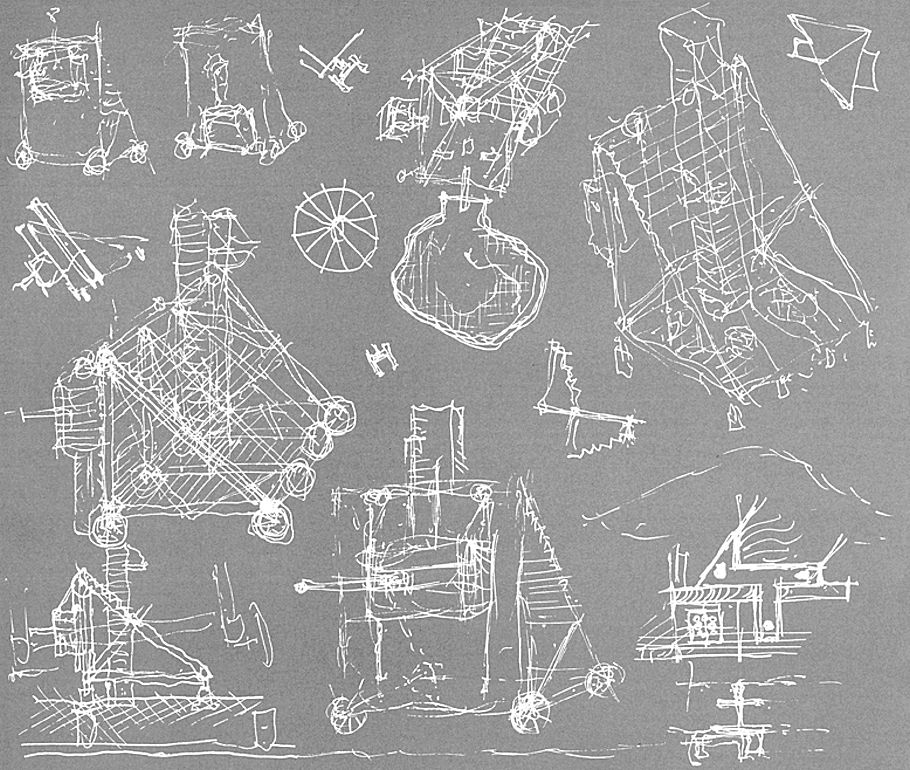hejduk | 1980 |
Artforum 1980.12 | John Hejduk | Masque |
|
|
Mask (mask), sb.2 1534. [-Fr. masque-It. maschera, perh.- Arab. maskara buffoon, f. sakira ridicule.] 1. a. A covering, usually of velvet or silk (with eye-holes), worn to conceal the face at balls, masquerades, etc. b. A screen of wire, gauze, etc. worn on the face for protection 1591. c. Antiq. The hollow figure of a human head worn by ancient Greek and Roman actors, 1705. d. A likeness of a personís face in clay, wax, etc. esp. one made by taking a mould from the face itself. Also death-m. 1780. e. A grotesque representation of a face worn on festive and other occasions, to produce a humorous or terrifying effect 1837. 2. fig. a. A cloak, disguise, pretence 1577. b. Something which covers or hides from view 1752. 3. A masked person 1580. 4. In techn. uses (see below) 1731.
|
|
|
|
|
|
www.quondam.com/57/5780d.htm | Quondam © 2020.11.19 |
